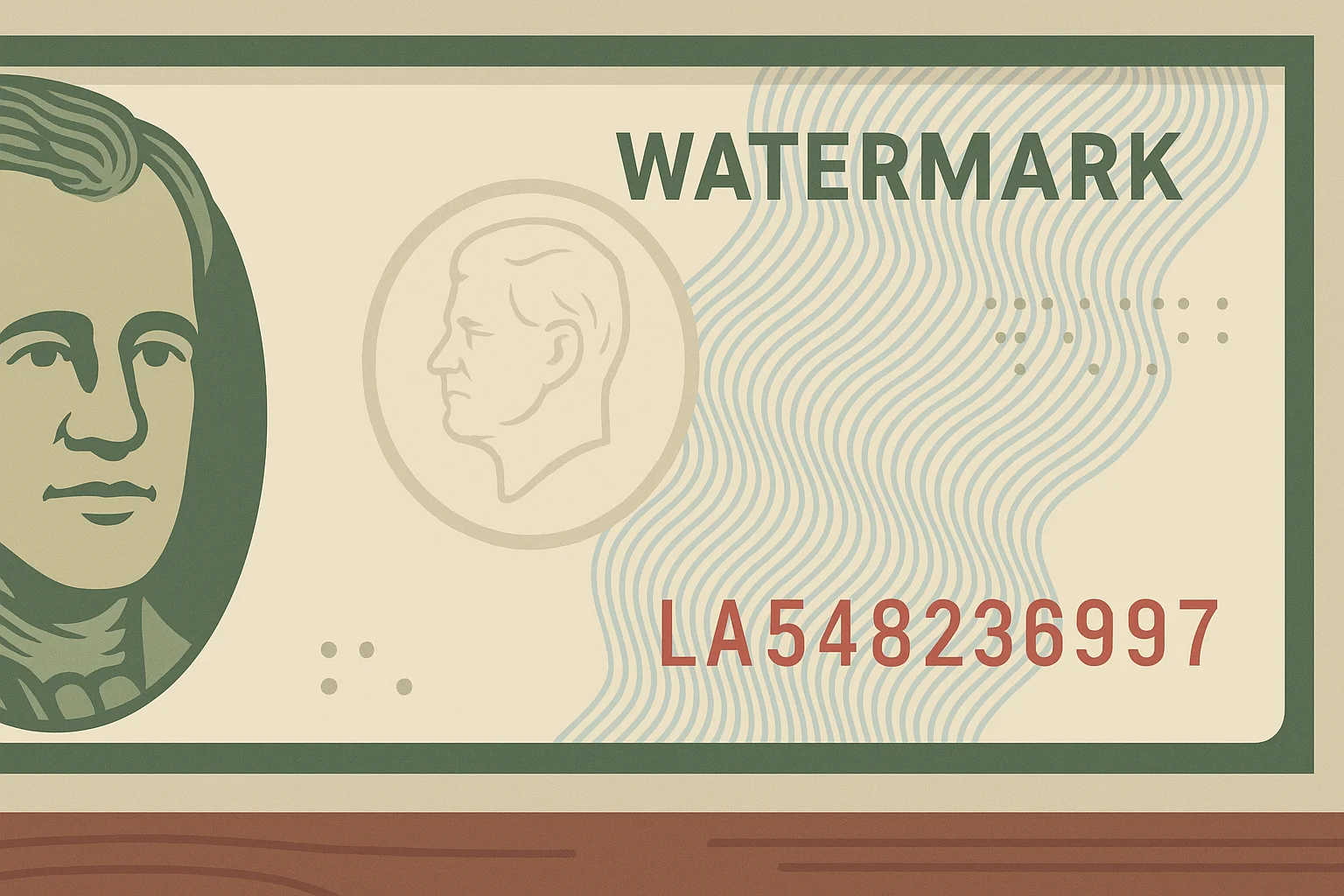Coin collectors only think about metal money, but accomplished numismatists know that coins only tell half the story. Paper money — or bills — presents another aspect of the monetary narrative, one that is filled with art, politics, and innovation. Bill study is a complement to coin collecting and gives collectors a broader, more inclusive perspective on the ways cultures perceive and portray wealth.
Coins may symbolize permanence and tradition to that extent, yet 1976 2 dollar bill value can surprise sometimes and embody flexibility and innovation. Combined, they reveal to us how monetary systems evolve, where politics and art intersect, and how nations project identity through design. For collectors seeking content, paper money offers a window into the study of money in its widest cultural and historical context.

1. Broader Numismatic Perspective
Numismatics is not limited to coins. It is concerned with all forms of money, from metallic pieces to paper notes, tokens, and even first exchange certificates. Collectors learn from bills how economies functioned as integrated systems rather than as discrete coinages.
Coins are more the story of production and exchange, while bills inform us about policies and institutions backing the money. Together, they comprise a more complete history. Collectors who follow both denominations can track the movements back and forth between metallic and paper-based economies — for example, from silver certificates to Federal Reserve Notes in the United States.
Understanding paper money deepens appreciation for currency’s evolution and demonstrates how governments and societies adapted to new materials and technologies to maintain trust in value.
2. Rich Artistic Detail
Paper money is often more visually expressive than coins. The larger surface area allows artists and engravers to create intricate designs, allegorical figures, and national emblems in stunning detail.
Collectors admire classic works such as:
- The 1896 U.S. Educational Series, renowned for its complex allegories of science and history.
- The British Colonial notes, which blended Victorian portraiture with local motifs.
- The Japanese yen series, which is replete with cultural and architectural imagery.
These designs are not simply decorative — they convey the issuing country’s values and aspirations. These artistic details, when analyzed, tell collectors about political identity and design philosophy shifts over centuries.
A single bill can embody craftsmanship that rivals fine art, combining engraving, typography, and symbolism. The more one studies paper currency, the clearer it becomes that it’s not just a tool of commerce — it’s a masterpiece in miniature.
3. Historical and Cultural Context
Every bill is a time capsule. The date, design, and inscriptions reflect a nation’s economic status and cultural values. Paper money was typically launched at times of upheaval or innovation — wars, revolutions, and financial reforms.
Bills provide information about:
- Political transformation, e.g., a leadership change or change in government symbols.
- Economic crises, as represented by inflationary or emergency issues.
- Social movements, as represented by portraits of reformers, scientists, or artists.
For instance, wartime emergency notes from the early 20th century illustrate how nations improvised during materials shortages. Postwar Weimar Republic German notes illustrate the disruption of hyperinflation. And commemorative notes from recently independent nations illustrate how new states used the design of currency to forge identity and pride.
By comparing coins and banknotes from the same era, collectors can appreciate how history made its imprint differently on two different mediums — hardy metal and fragile paper — to create a more vivid picture of the past.
4. More Variety and Rarity
Rarity drives the thrill of collecting, and paper money offers fertile ground on that score. Many bills were printed in small quantities or had test printings, experimental printings, and production errors that never reached wide circulation.
Bills, as opposed to coins, are more prone to wear and damage, so well-preserved examples are even more rare. Notes with unusual serial numbers, printing errors, or commemorative seals usually command high premiums.
A few examples are:
- Early U.S. large-size notes, sought after for their low survival rates.
- Misprinted banknotes, with doubled serial numbers or missing seals.
- Experimental polymer notes, issued in short test runs before wider adoption.
The area is wide and active, with finds at all budget levels. Collectors can build important collections by specializing in rarity within geographic areas or design periods.

5. Educational Value
Bills offer an educational component that is difficult to match in other collectibles. They familiarize collectors with printing techniques, security features, and anti-counterfeiting devices. Each note is a lesson in technology and innovation, from the first intaglio printing to microtext and holographic strips today.
Study of watermarks, UV features, and serial configurations gives hands-on experience that sharpens a collector’s observational powers. It also opens a window to the changing portrait of money — from hand-drawn effigies to digitally enhanced polymer prints.
Collectors typically find that studying the processes gives them a greater appreciation for both paper and coin minting. Studying the different materials and processes that came into existence helps bridge the gap between the past and present-day standards of production.
6. Investment Diversification
The addition of paper money to a coin collection introduces financial and thematic diversification. Banknotes move differently in the collectibles market than coins and thereby provide effective hedges against volatility in metal-based numismatics.
Rare notes, particularly those with low print runs or historical importance, have steadily increased in value over the past decades. For example, early U.S. Gold Certificates, Confederate notes, and obsolete state notes have achieved significant appreciation in market value.
In contrast to bullion coins, which derive their value from metal prices, paper notes derive their value from design rarity, age, and condition. This creates a separate market segment that can stabilize the investment value of a collection overall.
Collectors can diversify by:
- Seeking out rare signatures or printing variations.
- Buying notes with serial number patterns like “radars” or “repeaters.”
- Acquiring commemorative or polymer series from modern nations.
While not every note guarantees a return, the hobby’s expanding collector base and limited supply of surviving examples drive long-term appreciation and global demand.
7. Ease of Identification
Unlike coins, paper notes have more overt identifiers that simplify authentication. Serial numbers, signatures, seals, and printing plates all determine a note’s origin, issue date, and rarity with ease.
Collectors also appreciate that bills are easier to research. Most have lengthy records in publicly accessible catalogs like the Standard Catalog of World Paper Money or through organizations like PMG and PCGS Currency.
Features that are common to make identification easier include:
- Serial numbers — unique to each note, so it can be traced.
- Watermarks — embedded designs confirming authenticity.
- Security threads and fibers — visible under light or UV inspection.
- Issuing authority and signatures — denoting official government or central bank verification.
These inherent security features make paper currency both informative and practical for collectors. Even beginners can verify the authenticity of a note with ease using research and the right equipment.
8. Technological Tools for Collectors
Modern collecting is dependent on technology, and digital apps now make it easier than ever to identify and catalog bills. Though intended for coins, apps like Coin ID Scanner have become handy tools for numismatists expanding into more comprehensive currency collections.
- Through the app, collectors can:
- Photograph a bill or coin for instant identification.
- Uncover details on year, origin, composition, and denomination.
- Show market price estimates and related historical notes.
- Create digital collections to track condition, purchase history, and rarity.
The app’s AI Coin Helper also assists in identifying subtle varieties or anomalies that may otherwise go unnoticed. It’s a practical way of bringing modern efficiency to a traditional hobby.
Technology bridges ease and precision, allowing collectors to enjoy both the tactile pleasure of physical bills and the digital accuracy of smart cataloging. This combination instills confidence in buying, selling, and preserving precious currency.
9. Growing Community and Resources
Paper money collecting is now a robust global niche with grading services, auction houses, and internet forums. Third-party organizations such as PMG (Paper Money Guaranty) and PCGS Currency grade notes using numerical ratings, providing transparency and trust to transactions.
Collectors today have:
- Internet forums and social media groups where collectors share finds.
- Specialized shows and international fairs featuring rare banknotes.
- Educational resources such as webinars, online catalogs, and auction archives.
The tight-knit community feel enables newcomers to learn quickly and offers aficionados a platform for knowledge sharing. This accessibility means even rare and large-denomination notes circulate in knowledgeable, secure markets.
10. Bringing the Collector Experience to Life
Beyond investment potential and rarity, paper money also brings an emotional component to collecting. Each note carries stories of commerce, leadership, and change—from engravers’ art to legends’ signatures.
Banknote collecting promotes appreciation for how societies have portrayed trust and value on paper. It invites collectors to find cultural ties, from portraits of national heroes to innovative abstract designs.
The combination of coins and banknotes tells a story spanning centuries of human progress. This union raises a modest collection to a living museum of history and art, in the palm of your hand.



